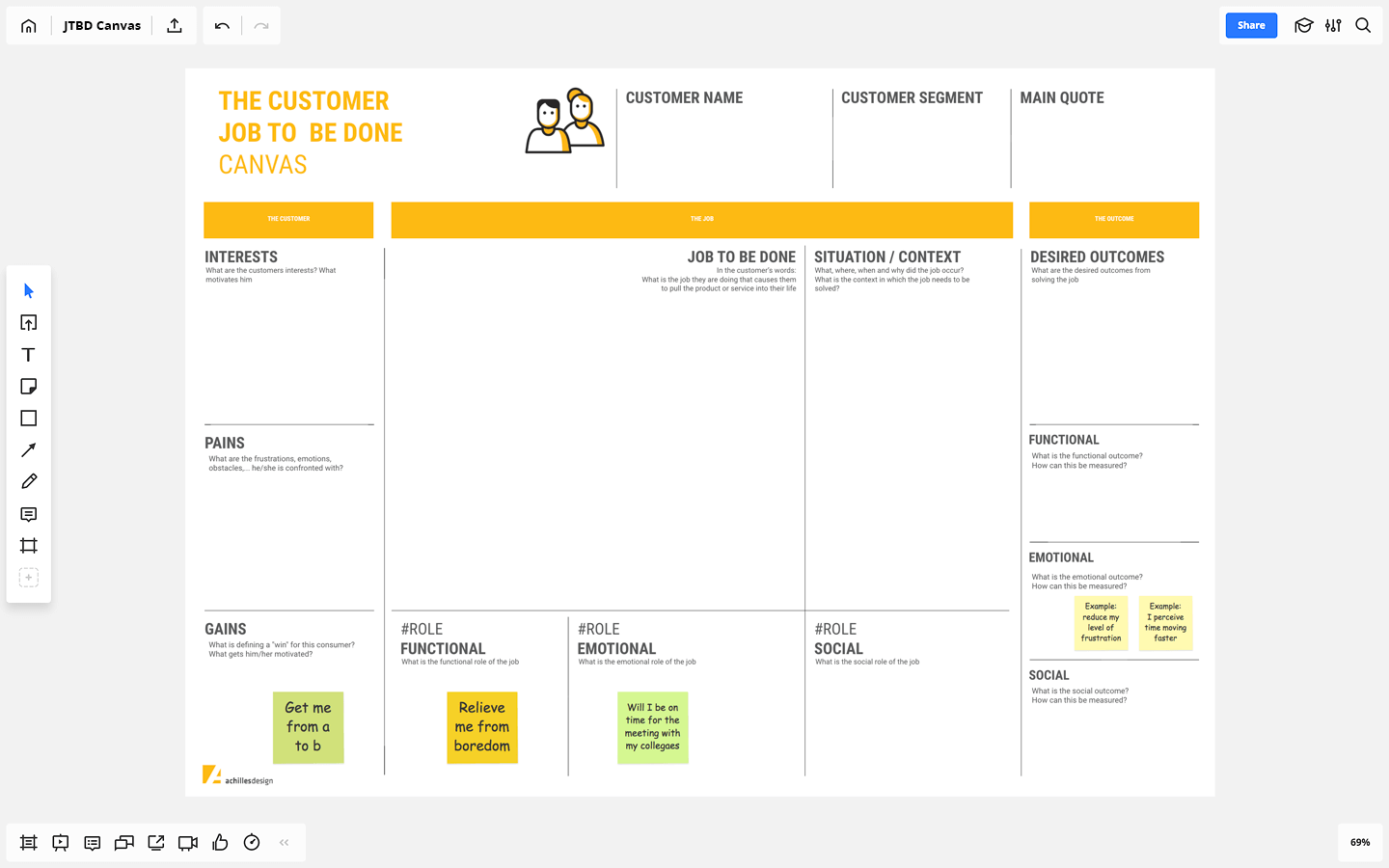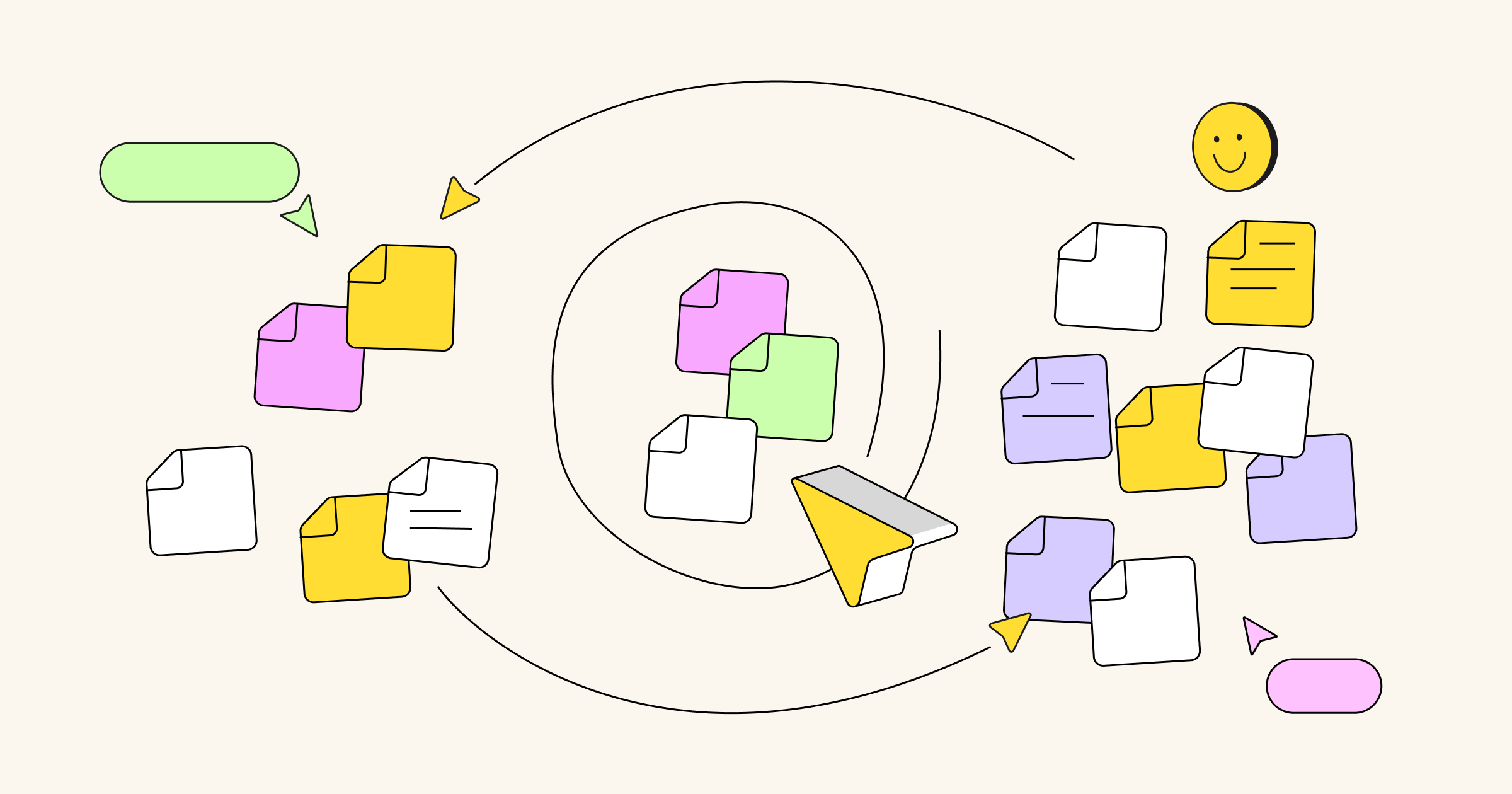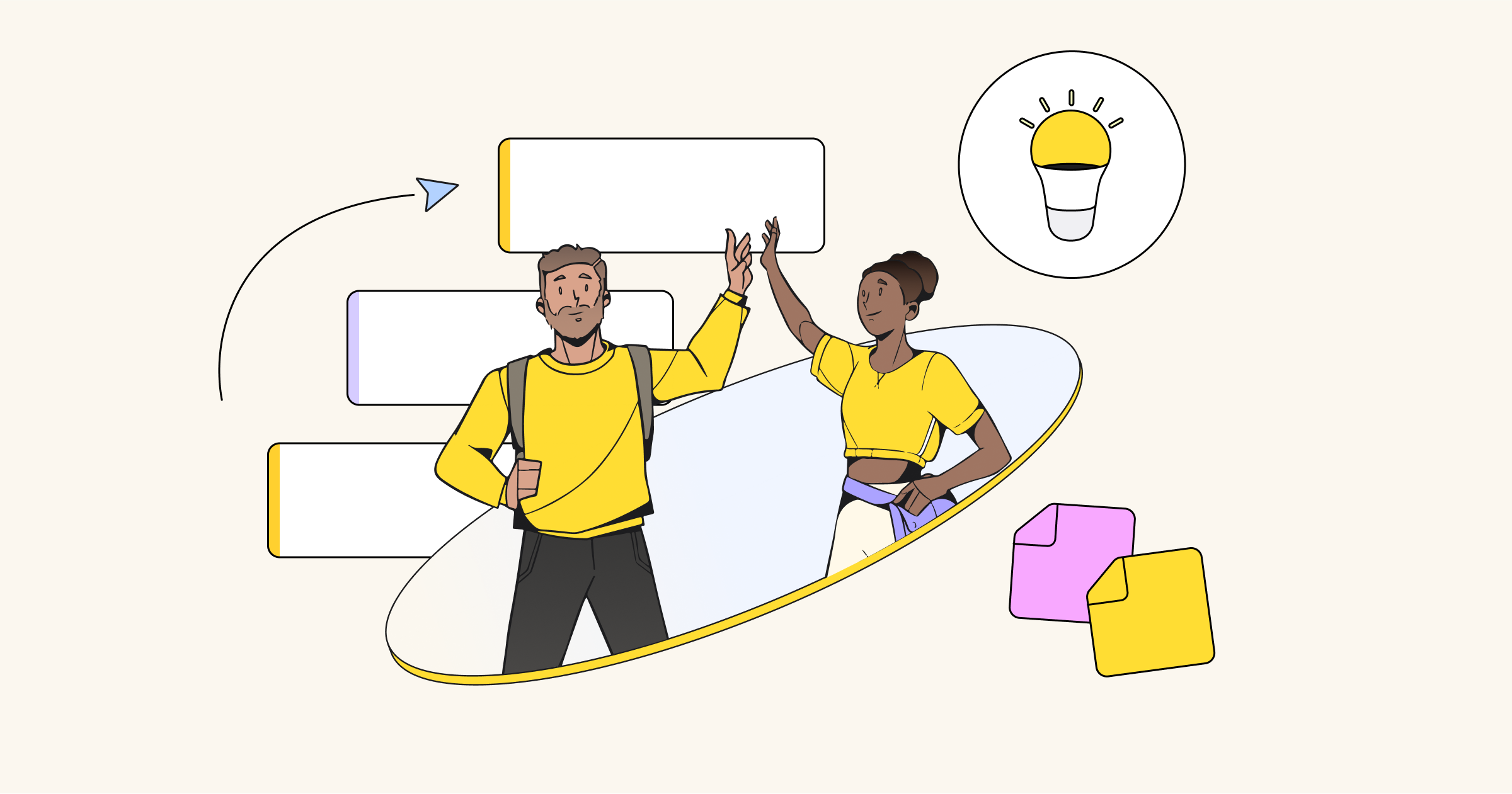Here at Miro, we set out on a mission to build a universal whiteboarding tool that helps companies embrace digital transformation, manage remote teams and think visually in order to speed up internal processes and delight their customers.
That’s why we are always curious about the ways leading companies and professionals from around the world approach building products that create value for their customers and help their creators build a strong foundation for a sustainable business. We asked Tom Verbist, a service design lead at Achilles Design, to explain how he helps companies define the customer’s main needs.
Talk to your customers first
Most of Achilles’s customers approach the firm because they want to innovate and create new products. These companies may have difficulty defining their next move, but at the same time, they need to prepare a product’s portfolio for next year. “We say, ‘Okay, if you’re thinking of new products to develop next year, you should start with your customer. What is going on? Is the current economic or technological climate affecting their behavior?’” Verbist explains. You should be able to pinpoint new or underserved preferences and needs.
After that, Tom suggests asking, “Is our customer really interested in solving the problem we see? Have they really experienced the problem we have an idea for?” You’ll want to validate your problem statements as soon as possible.
He advises organizing a customer workshop (don’t forget to invite different stakeholders to keep them in the loop) and interviewing potential users frequently during the research process. Try to work visually, by showing them early napkin sketches, renders and prototypes to catalyze an interesting discussion. Keep in mind that you can have different segments of customers for the same problem or product. For example, children, adults and seniors may use the same product in different ways.
Sometimes, you’re working in a niche market or serving a customer segment with limited availability. If you can’t get enough information from your customers by interviewing them, another way to gather information is to learn as much as possible from social media, like Facebook or Instagram. “Social media is tremendously good for finding perception about certain problems; for example, when you’re doing a medical design,” Verbist says. “Nurses, doctors and surgeons can be difficult to reach because they are very busy and are rarely available for interview. However, and to my surprise, you’ll find Facebook groups where they discuss specific problems or announce conventions and events. If you get into those groups, you can pitch your problem there, where the chances of getting feedback are greater,” he adds.
Profile
Achilles Design
Achilles Design is one of the leading design consultancies in Belgium. It helps its clients innovate faster and find design and product development expertise they don’t have in house.
Headquarters:
Mechelen Belgium
Founded: 1994
Team: 21 people
Founders: Koen Elsen and Jürgen Oskamp
“A lot of times when you’re designing, you’re not really close to your target group and it’s fairly labor intensive to go and look for them and interview them on the spot,” adds Tom. Achilles uses Miro to work collaboratively with potential users in real time. “They can fill out their answers and collaborate more easily because distance is not a problem anymore,” Verbist concludes.
A tip for MIRO users:
You can interview people by giving them access to your canvas and having them fill out the forms themselves. Or you can show them your ideas and get them to comment on your designs.
Use a JTBD canvas to assess the customer’s current needs
Now that your customers or clients are willing to participate and help you in your research, how can you structure all the information from interviews or outside sources? A “Jobs To Be Done” canvas is extremely useful for solving this problem, Tom suggests. By framing and structuring the information this way, you are more likely to create meaningful products, brands and services in the end.

Verbist uses an example of buying candy at gas stations so drivers have something to do to pass the time in traffic. “We recognize that a Job To Be Done for people stuck in traffic is, ‘give me something so I can pass the time.’” Context matters when stating these Jobs To Be Done. For example, you’re less likely to use candy to pass time when you’re at home.
A Job To Be Done can be functional (e.g. “I want a kitchen because I want to be able to cook.”), emotional (e.g. “Help me relax.”) or social (e.g. “I want to be a good mother.”). The context is another variable. There is also something Tom calls “the desired outcome,” which is how you measure the performance of the solution of the Job To Be Done. “The desired outcome from the Job To Be Done of passing time could be the perceived speed of time or how much it can distract my mind,” he observes.
Note that there are different ways to organize the JTBD sessions. The number of people you invite depends on the company you work for. “Product managers are one key target group we work with, but also marketers and other product designers,” says Verbist. Companies frequently hire Achilles Design because they want to have fresh input from the outside. They hire a consultancy to challenge their employees to collaborate on different products.
Determine how important a Job To Be Done is
Before moving forward and starting the development process, you first want to know how important a Job To Be Done is. Passing the time in a car may be something that the customer considers a minor problem. But there are times when a Job to Be Done is very acute, and it can lead you to an interesting project.
“The next step you want to take is to determine how satisfied the customer is with the current substitutes in the market,” insists Tom. If another product is already filling that Job To Be Done successfully, you might avoid working further on the project unless you’re okay with lower profit margins or willing to disrupt the market. Although it’s highly profitable when you succeed in disrupting, you’ll be investing more in R&D resources initially.
Besides determining the customers’ satisfaction with the current market’s offerings, you’ll also assess the importance of a Job To Be Done. If the consumer does not think it’s a problem that’s worth solving or changing their behavior for, it’s better to revisit your research first. “To determine the opportunity, you take those two things – importance and satisfaction – and if people are not satisfied, then you have a great opportunity,” states Verbist. You’ll want to compare that to your demographic data. If the numbers (e.g. size of the target audience and geographic location) add up, you’ll have a greater chance of successfully putting your product in the market.
When a Job To Be Done and its desired outcomes are both very acute and very important, you can start to conceptualize solutions. Tom gives a simple example. Say your JTBD is “carry my stuff to my workplace,” and the desired outcome is “decrease the chance that I forget something.” You may come up with ideas such as a bag with lots of extra pockets, RFID tags, tethers or even nothing in the bag but an app on your phone to remind you. “The idea here is that you gather a lot of possible solutions; don’t be afraid to put in a few crazy ideas. A product is roughly defined by the combination of solutions on different desired outcomes,” says Verbist.
At this stage, you have to go through another round of interviews to assess the opinion of your target audience regarding these solutions. You can make a list of different products you are considering developing and display them in a graph next to each other. When you have a winner, you can make a list of all the features that are required, giving you your minimum viable product. “Then once you have that, you also want to know how much they are willing to pay,” adds Tom. “Never forget this last step to ensure the viability of the product idea.” Depending on the answer, you can choose a timeframe and the team you need to complete the project.
Looking for a productivity tool to simplify remote collaboration?
Try Miro free, no strings attached
Jobs To Be Done work very well for problem solving, since they only display problems. If you compare this process to Buyer Personas, the latter is more useful for summarizing a lot of data and aligning around certain discoveries you made about your user. “Your approach has to vary depending on what you are trying to solve,” argues Tom.

ABOUT THE speaker
Tom Verbist
Tom Verbist is a design thinker and service design lead at Achilles Design. For more updates, you can follow him on LinkedIn.



